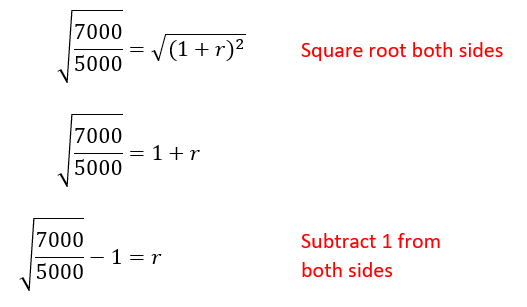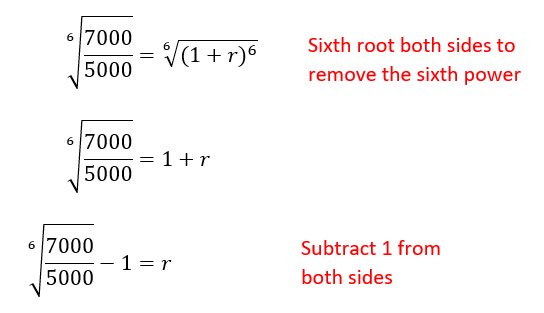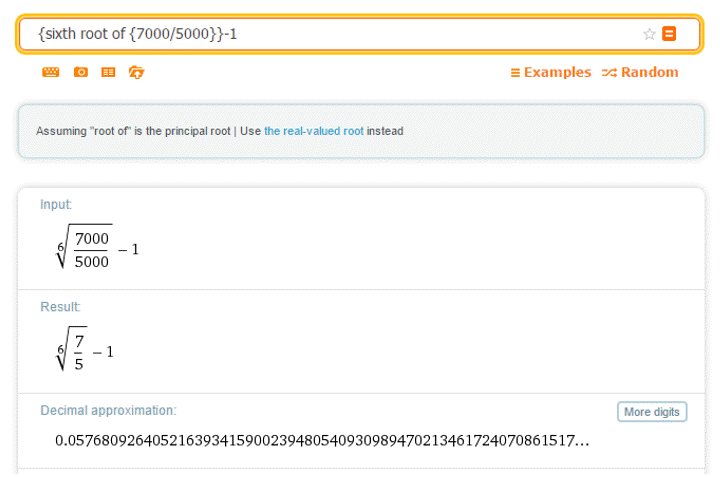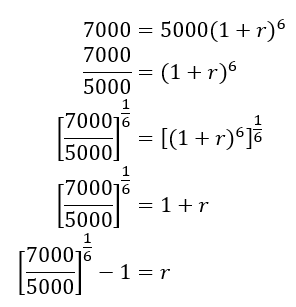Problems that ask you to solve for the rate r in exponential growth require the use of roots or creative use of exponents. Let’s look at an example.
Problem Suppose a town has a population of 5000 in 2010. If there are 7000 people in the town in 2012, what is the annual rate at which the population is growing?
Solution The easiest way to approach this problem is to think in terms of the exponential growth (compound interest formula),
This formula applies when population grows at an annual rate.
Let’s look at the quantities in the problem statement:
- 5000 people originally > P = 5000
- There is 7000 in the population after 2 years > A = 7000 and n = 2
Putting these values into the formula above gives us
We need to find the annual rate r. Since the r is hidden in the parentheses, we start by isolating the parentheses.
To get at the r, we need to remove the square on the parentheses.
Using a calculator to do the square root, we get r ≈ 0.183 or 18.3%.
Although most calculators have a square root key, when removing powers it is often useful to raise both sides to a power. For instance, we could remove the square by raising both sides to the ½ power:
When you raise a power to another power, you multiply the exponents 2 ∙ ½ = 1. The right side simply becomes 1 + r. Now we can solve for r:
Using the power key on your calculator gives the same answer as before. Make sure the 1/2 power is entirely in the power. You can make sure this happens using parentheses: (7000/5000)^(1/2)-1.
Now what if the population grows over six years instead of two years? Instead of a square on the parentheses we now have a sixth power.
To solve for r in this equation, we follow similar steps.
The root can be computed on a graphing calculator using the MATH button or put into WolframAlpha:
Either method gives r ≈ 0.577 or 5.77%. Notice that the annual rate is lower when it is earned over a longer period of time.
If we use a 1/6 power to solve for r, we would carry out the steps below:
Using a 1/6 power on your calculator gives the same answer as above.










